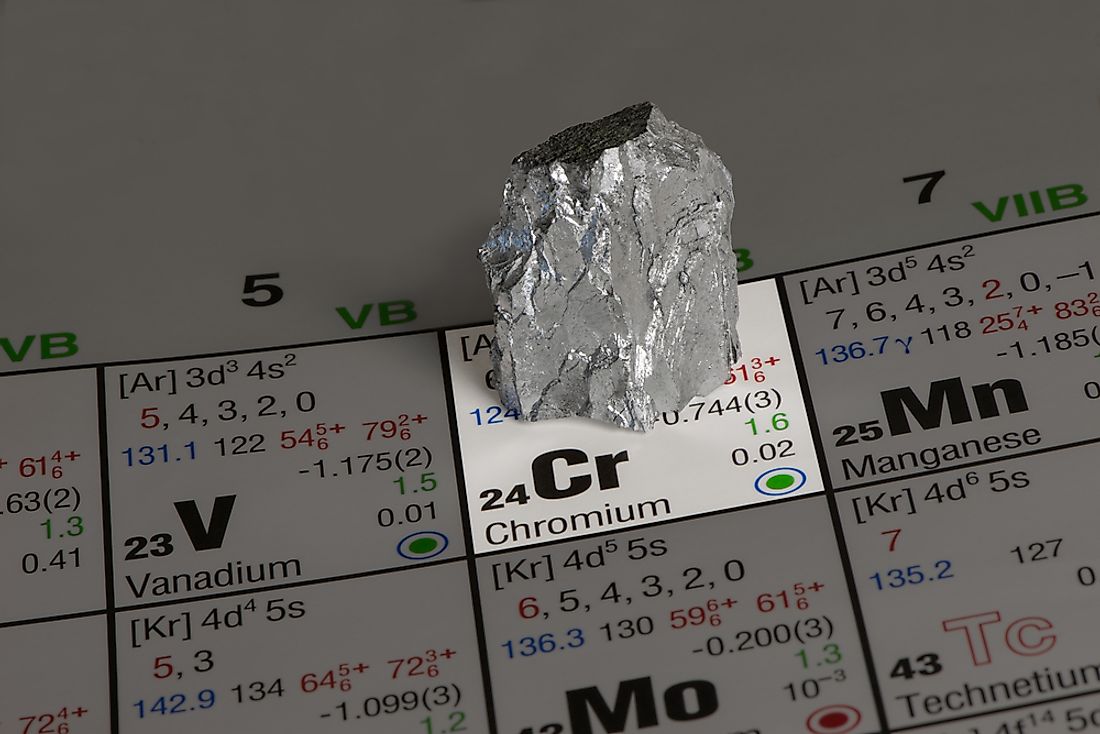What Are The Effects Of Chromium Poisoning?

Chromium poisoning, also known as chromium toxicity or heavy metal poisoning, refers to all the effects related to poisoning as a result of exposure or contact with some forms of chromium. Poisoning is especially pronounced when organisms come into contact with hexavalent chromium, including its compounds, due to its high levels of toxicity.
What Is Chromium?
Chromium is a heavy metal that is of high value due to its hardness and high corrosion resistance. It is used for several industrial functions. It the main additive in stainless steel, and is also used in the manufacturing of dyes and pigments, tanning, as a catalyst, and other uses. The largest producers of chromite ores and concentrates are South Africa, Kazakhstan, India, Russia, and Turkey. In 2013, South Africa produced almost half of the world's chromium ore.
Importance of Chromium
Some forms of chromium, however, like trivalent chromium, are actually crucial to human nutrition. The nutrition and health benefits of chromium can be seen in things like improving athletic performances. Even then, too much of these essential forms of chromium may, hypothetically, lead to genotoxicity. Genotoxicity, were it to occur, is actually quite dangerous since it involves the mutation of genetic information of an organism which may eventually cause cancer.
Symptoms of Chromium Poisoning
The symptoms vary depending on the form of contact with chromium. Exposure could happen through the mouth, excessive inhalation, or through the skin after contact. For oral exposure, the signs include severe irritation of the stomach and intestines, ulcers, fever, vertigo, liver problems, muscle cramping, nausea, diarrhea, and vomiting. If the poisoning is through inhalation or the skin, then the symptoms may include the development of irritating skin rashes, ulcers of the nose, inflammation of the cornea, overly sensitive skin, problems with the teeth and gums, edema, bronchitis, and other problems.
Treatment
The treatment of chromium poisoning depends on the form of exposure. The severity of the infection is also another factor that is used to determine the mode of treatment to be used. Even then, there is no generally used mode of treatment.
Exposure through the skin may be treated by removing the substance from the skin. If the eyes are affected, then thorough rinsing of the eyes with clean running water is strongly advised. The doctor may also prescribe some antibiotics in order to prevent any secondary infections.
If the exposure is through the mouth, then proper electrolytes and fluids should be taken in order to keep a balance of the electrolytes in the system. For this form of exposure, the chromium is eventually ejected from the body through bowel movement or urination. Exposure through inhalation requires taking the person away from the source of the toxic substance. If they have labored breathing, then assistance should be provided through oxygen or other means.
Prevention
There are several ways through which exposure can be curbed. Most of these ways involve taking care while handing chromium by wearing proper equipment and following the instructions for use. These methods include wearing protective equipment and gear to guard the skin and the lungs, taking a regular shower and general cleaning of the workspace after handling chromium, avoidance of food and drinks in a place with chromium, leaving contaminated work clothes at the place of work, and other preventive measures.











